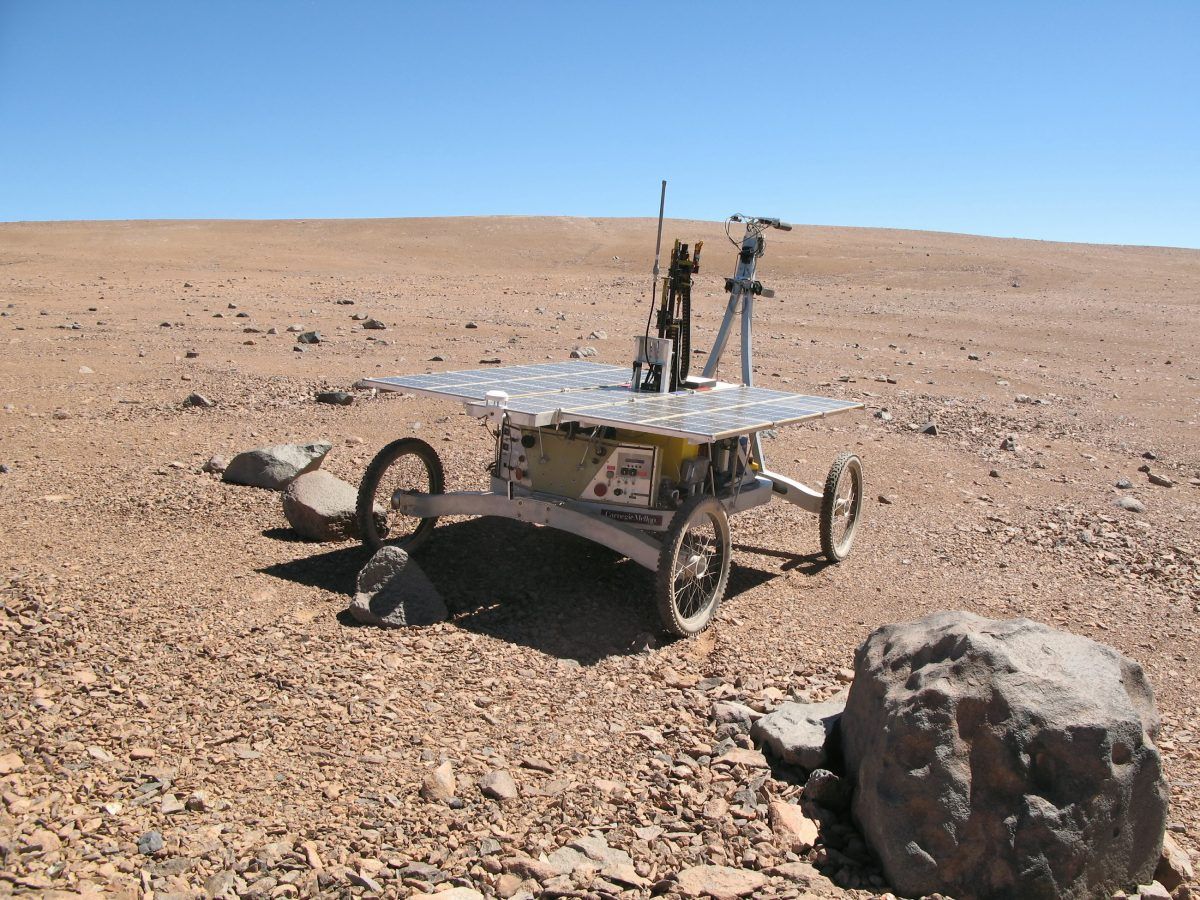
Martian Vehicle (c) SWNS
A drill that will spearhead the search for life on Mars was put through its paces using a vehicle resembling a soapbox derby contraption.
The ‘rover’ collected micro-organisms in Chile’s Atacama desert – the most “Martian-like” environment on Earth – ahead of NASA and the European Space Agency missions to the Red Planet in 2020.
Analysis of the samples nearly three feet into the ground have given scientists a clearer picture of where and what kind of bacteria to expect in Mars.
Study leader Professor Stephen Pointing, of Yale-NUS College, Singapore, said: “We have shown that a robotic rover can recover subsurface soil in the most Mars-like desert on Earth.
“This is important because most scientists agree that any life on Mars would have to occur below the surface to escape the harsh surface conditions where high radiation, low temperature and lack of water make life unlikely.
“We found microbes adapted to high salt levels, similar to what may be expected in the Martian subsurface. These microbes are very different from those previously known to occur on the surface of deserts.
“The core of the Atacama Desert in Chile is extremely dry, experiencing decades without rainfall. It has high surface UV radiation exposure and is comprised of very salty soil. It’s the closest match we have on Earth to Mars, which makes it good for testing simulated missions to this planet.
“Mars missions hope to drill to approximately 2m and so having an Earth-based comparison will help identify potential problems and the interpretation of results once rovers are deployed there.
“Ecological studies that help us predict the habitable areas for microbial communities in Earth’s most extreme environments will also be critical to finding life on other planets.”
The samples recovered by the autonomous rover contained unusual and highly specialised microbes that were distributed in patches.
Researchers then linked their dispersal to limited water availability, scarce nutrients and chemistry of the soil.
They hope theirs findings, published in the journal Frontiers in Microbiology, will aid the search for evidence of signs of life during future planned missions to Mars.
The 2020 missions by NASA and the European Space Agency will search for evidence of past or present life and for the first time in Mars.
Rovers are to use mounted drills to recover sediment samples below the surface where refuges for simple microbial life may still exist and the trial is part of a series of tests of the technology.
The one in the study was adapted to drill to a depth of 80cms (31.5 inches), and its samples were compared to those recovered by hand.
DNA sequencing found the results of each methods were similar and that the trial was a success.
Prof Pointing said future research includes drilling deeper to understand just how far down recoverable microbes occur.
The tests also revealed that microbial life was very patchy and related to the limited water availability, scarce nutrients and geochemistry of the soil.
Study co-author Dr Nathalie Cabrol, of The SETI Institute, said: “These results confirm a basic ecological rule that microbial life is patchy in Earth’s most extreme habitats, which hints that past or present life on other planets may also exhibit patchiness.”
She added: “While this will make detection more challenging, our findings provide possible signposts to guide the exploration for life on Mars, demonstrating that it is possible to detect life with smart robotic search and sampling strategies.”